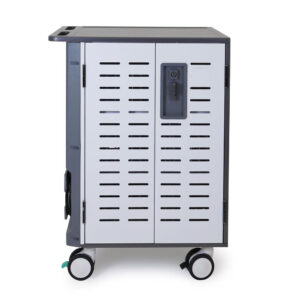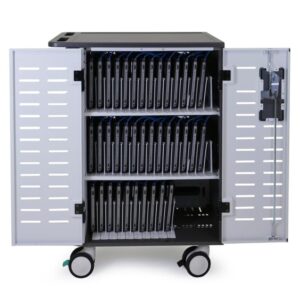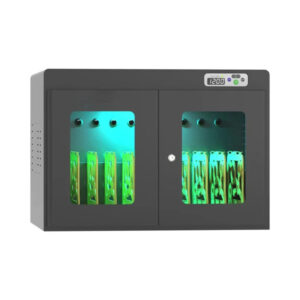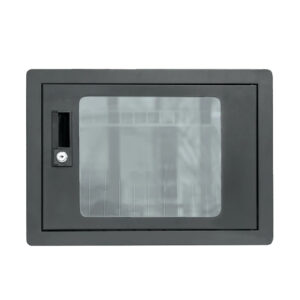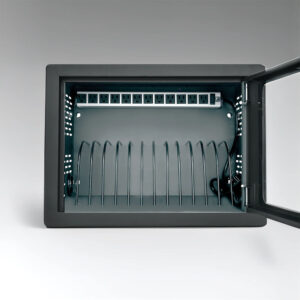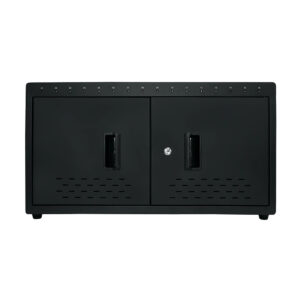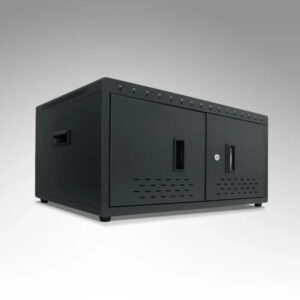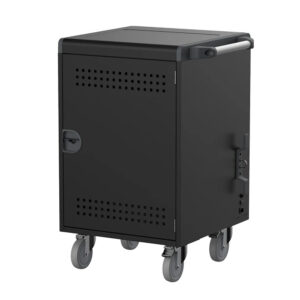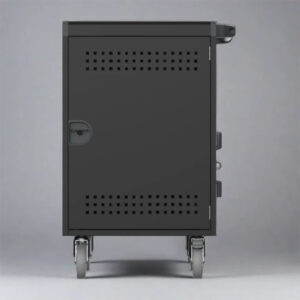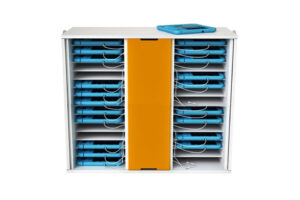Summary
The debate between portable and stationary charging cabinets centers on their respective advantages and disadvantages for various applications, particularly in educational, corporate, and public settings. Portable charging cabinets are valued for their flexibility, mobility, and enhanced safety features, allowing users to charge multiple devices simultaneously in different locations. These cabinets offer a centralized solution that promotes organization and reduces downtime, making them appealing for dynamic environments where accessibility is critical.
In contrast, stationary charging cabinets are designed to provide a more permanent solution, emphasizing centralized power management and advanced charging technology. They often include safety features that protect devices from electrical hazards, making them suitable for environments where devices are used regularly and need secure storage. However, their fixed nature can pose challenges in terms of space requirements and limited mobility, potentially reducing accessibility for users in different locations.
Both types of charging cabinets come with their own set of drawbacks. Portable options may suffer from durability concerns and limited charging speeds, while stationary cabinets can be more expensive to install and maintain. The choice between the two often depends on the specific needs of the environment, with portable units excelling in situations requiring mobility and flexibility, whereas stationary units shine in organized settings where devices are used consistently and require reliable charging solutions.
As the demand for efficient charging solutions grows, understanding the context and requirements of different environments will help organizations determine the most appropriate option. Both portable and stationary charging cabinets present unique benefits that cater to varying user needs, making them essential components in the management of electronic devices today.
Table of Contents
Pros of Portable Charging Cabinets
Portable charging cabinets offer several significant advantages that make them an appealing choice for various environments, from educational institutions to corporate settings.
Flexibility and Mobility
One of the standout features of portable charging cabinets is their flexibility. These cabinets can be easily transported to different locations, making them ideal for dynamic environments where charging needs may change frequently. For example, in educational settings, portable cabinets allow teachers and students to access charging facilities in various classrooms or common areas, promoting a seamless learning experience without the concern of running out of battery. Their mobility ensures that users have access to charging solutions wherever they need them, reducing downtime and enhancing productivity.
Centralized Charging Solution
Portable charging cabinets serve as centralized charging solutions that facilitate the charging of multiple devices simultaneously. This capability is especially beneficial in scenarios where numerous devices, such as laptops, tablets, and smartphones, are in constant use. By housing multiple charging ports, these cabinets help organize the workspace and ensure that devices are charged and ready for use, minimizing downtime and keeping operations running smoothly.
Enhanced Safety Features
Safety is a critical concern when it comes to electrical devices, and portable charging cabinets address this issue with several built-in safety features. These cabinets often include surge protection, overcurrent protection, and temperature control mechanisms to prevent electrical hazards and potential damage to devices. Additionally, their secure storage design reduces the risk of accidents or theft, providing users with peace of mind when charging valuable electronics.
Cost-Effective Power Management
Adopting portable charging cabinets can lead to cost savings and optimized power distribution systems. By streamlining power distribution processes and reducing the need for multiple power sources and chargers, businesses can enhance productivity while also lowering operational costs. The convenience and flexibility of these cabinets allow organizations to manage power more effectively, making them invaluable assets in various industries.
Organizational Benefits
The design of portable charging cabinets promotes a clutter-free environment by providing designated compartments for each device. This organization makes it easier to locate gadgets quickly and reduces the frustration associated with misplaced devices and tangled cables. By eliminating clutter, these cabinets enhance the overall user experience and improve the efficiency of device management.
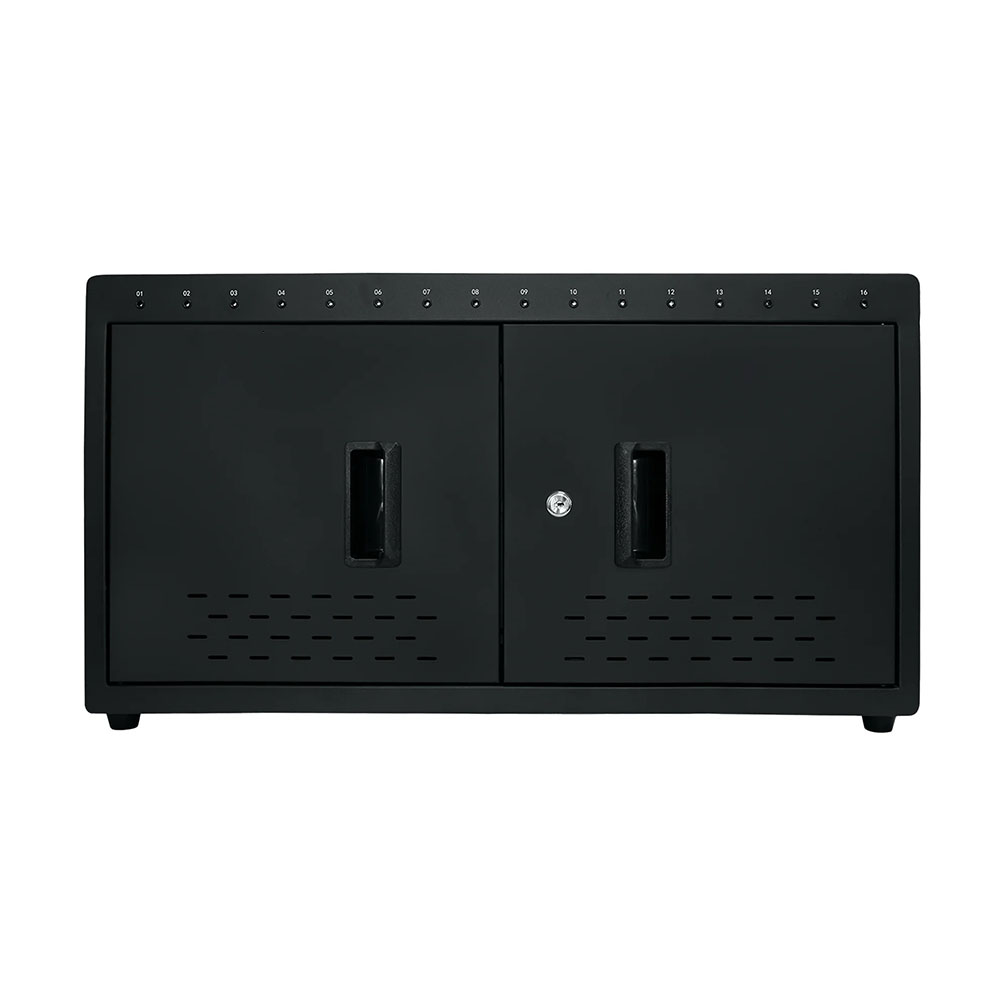
Cons of Portable Charging Cabinets
While portable charging cabinets offer several benefits, they also come with certain drawbacks that may affect their suitability for specific environments.
Durability Concerns
The materials used in portable charging cabinets may not always be as robust as those in stationary units. Consequently, these cabinets may be more susceptible to wear and tear, especially if frequently moved between locations. This aspect can lead to a need for more regular maintenance and replacements, ultimately increasing long-term costs.
Limited Charging Speed
One of the main disadvantages of portable charging cabinets is that they often provide lower charging speeds compared to stationary wall-mounted chargers. This limitation can result in longer charging times for devices, which may not be ideal in fast-paced environments where quick access to fully charged devices is essential.
Power Capacity Constraints
Portable charging cabinets typically have a limited power output, which may restrict the number of devices that can be charged simultaneously at optimal speeds. If too many devices are connected at once, users may experience slower charging rates, leading to potential delays and reduced efficiency in device utilization.
Security Issues
Despite many portable charging cabinets incorporating safety features such as lockable doors, their mobility can pose security challenges. In shared environments like schools or public spaces, the risk of theft or unauthorized access to devices remains a concern. Users must ensure that these cabinets are monitored or secured to mitigate these risks.
Organization Limitations
While portable charging cabinets are designed to facilitate organization, their mobility can also lead to disorganization if not managed properly. If these cabinets are frequently relocated without a systematic approach, users may find devices misplaced or tangled, counteracting the organizational benefits they provide.
Setup and Management Complexity
Setting up portable charging cabinets may require careful planning, especially in terms of optimal placement and power supply management. This complexity can increase the initial setup time and may require ongoing adjustments to ensure efficient operation, particularly in environments with fluctuating user demand.
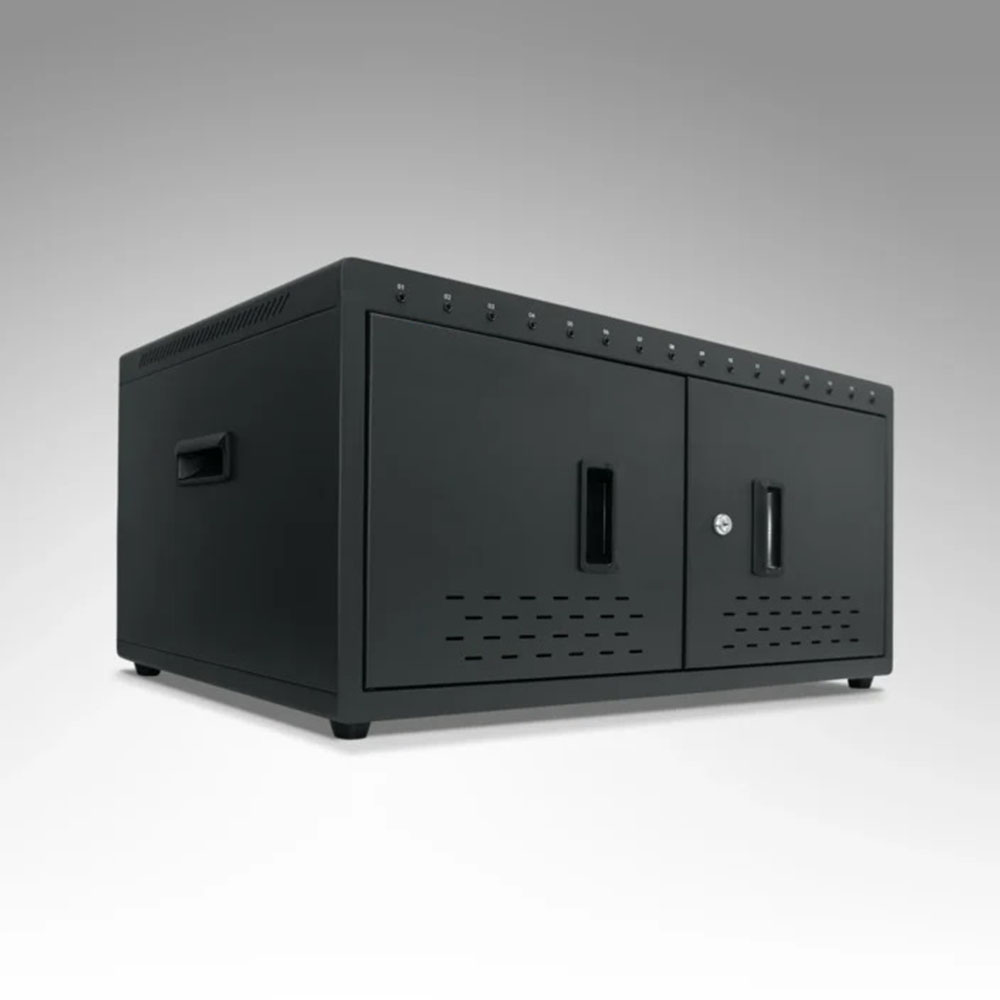
Pros of Stationary Charging Cabinets
Stationary charging cabinets provide a range of benefits that enhance both functionality and user experience in various environments.
Centralized Power Management
One of the primary advantages of stationary charging cabinets is their ability to centralize power management. These cabinets are designed to house multiple devices, allowing organizations to charge and store laptops, tablets, smartphones, and other gadgets in one location. This eliminates the need for scattered chargers and power outlets, ensuring that devices are readily available and fully charged when needed, thus minimizing downtime.
Enhanced Organization
Stationary charging cabinets contribute to improved organization by providing designated compartments for each device. This setup helps maintain a clutter-free environment and makes it easier to locate devices. With built-in shelves and multiple charging ports, users can manage their devices efficiently, preventing tangling cables and reducing the risk of misplacement.
Advanced Charging Technology
Many stationary charging cabinets come equipped with smart charging technology that optimizes charging speeds and prevents overcharging. This feature not only extends the battery life of devices but also ensures that all devices are charged quickly and effectively. The integration of load balancing and dynamic tariff charging capabilities allows for more efficient power distribution and cost savings, as these systems can adjust to the optimal charging conditions based on electricity rates and power consumption.
Safety Features
Safety is a critical consideration in electrical systems, and stationary charging cabinets are designed with this in mind. They often include safety features such as surge protection, overcurrent protection, and temperature control mechanisms, which help prevent electrical hazards and protect devices from damage. Additionally, these cabinets provide secure storage, reducing the risk of accidents or theft.
Portability and Flexibility
While stationary charging cabinets are designed for specific locations, some models offer a degree of portability, allowing for easy relocation as needed. This feature is particularly beneficial in dynamic environments, such as educational institutions or corporate settings, where charging facilities may be required in different areas. The flexibility to move these cabinets to where power is needed most enhances their overall utility.
Cost-Effectiveness
Investing in stationary charging cabinets can lead to significant cost savings for businesses. By streamlining power distribution and improving the efficiency of charging processes, organizations can reduce operational costs associated with managing multiple chargers and outlets. The long-term benefits of enhanced organization and reduced device downtime further contribute to the overall value of these solutions.
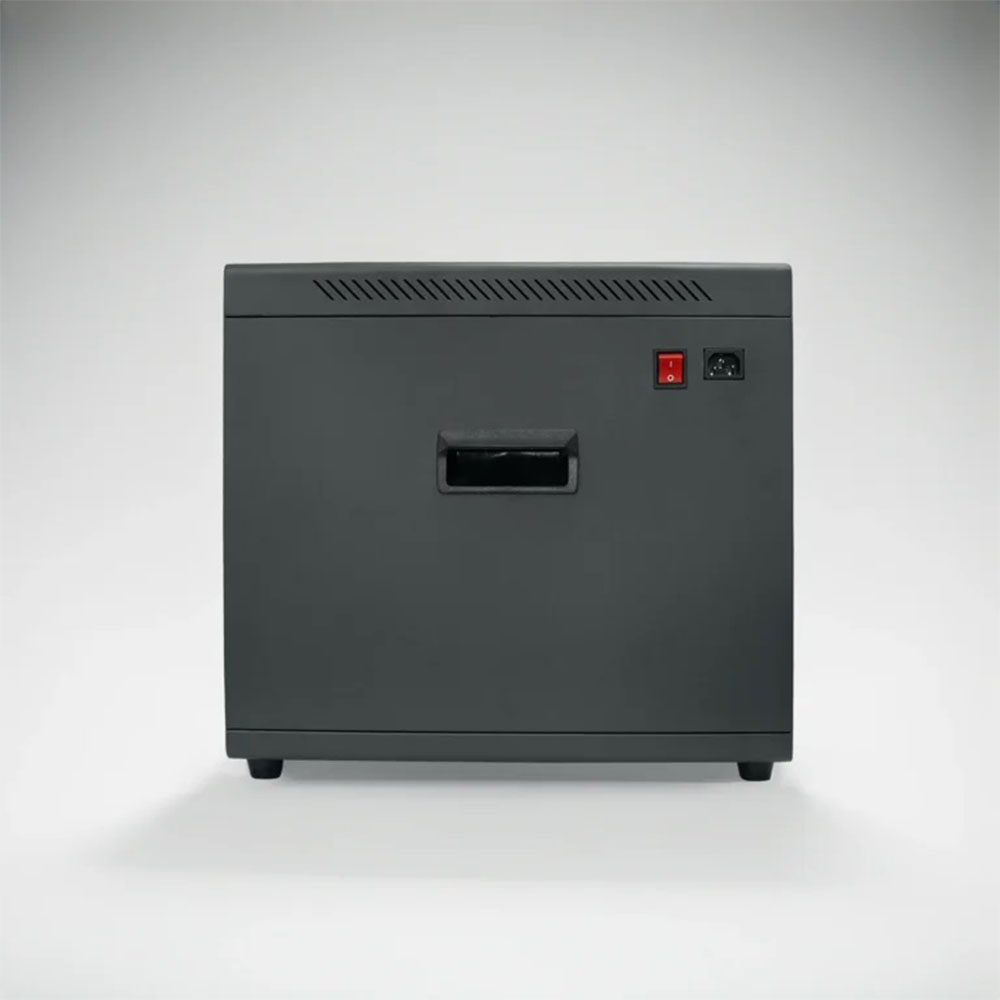
Cons of Stationary Charging Cabinets
Stationary charging cabinets, while offering numerous advantages, also come with several drawbacks that can affect their usability and practicality in various settings.
Space Requirements
Stationary charging cabinets typically require a designated space that may not be readily available in all environments. This can pose a challenge in smaller settings or where space is at a premium, as the cabinets can take up valuable real estate that could be utilized for other purposes.
Higher Initial Costs
The upfront investment for stationary charging cabinets is generally higher compared to portable options. This includes costs for the cabinet itself, installation, and potentially any necessary upgrades to electrical systems. For organizations with tight budgets, this can be a significant barrier to adoption.
Installation Complexity
One significant disadvantage of stationary charging cabinets is the complexity involved in their installation. These units often require professional installation, which may include wiring, meter upgrades, or permits. This can lead to additional costs and longer timelines before the cabinets are operational.
Limited Mobility
Unlike portable charging solutions, stationary cabinets are fixed in place, which limits their mobility. This can be a drawback in environments where devices need to be charged in multiple locations, as moving a stationary cabinet can be cumbersome and impractical.
Maintenance Challenges
While stationary cabinets are built for durability and longevity, they can still require maintenance over time. This may involve addressing wear and tear or ensuring the electrical components are functioning properly, which can lead to additional costs and downtime if repairs are needed.
Accessibility Issues
In environments where multiple users need access to charging stations, stationary cabinets may not always be the most accessible solution. The fixed nature of these units can make it difficult for users in different locations to access the charging facilities they need, potentially leading to increased device downtime and inefficiencies in device management.
Comparison of Use Cases
Convenience and Accessibility
Portable charging solutions, such as the CarryOn™ Charging Station, offer unmatched convenience for users on the go. These devices allow for the simultaneous charging of multiple devices, enhancing accessibility in various environments, including schools and workplaces. For instance, Hallmark Care Homes Network successfully implemented portable chargers to streamline access to electronic care planning systems, ensuring caretakers can readily access essential information. This flexibility is particularly beneficial in educational settings where shared devices must be efficiently managed to avoid wasting valuable class time.
Cost-Effectiveness
Both portable and stationary charging solutions present cost-effective options for organizations. While stationary charging cabinets may require a larger upfront investment, they often cater to higher volumes of devices in settings such as libraries or large corporate offices. Conversely, portable charging stations can be more economical for smaller organizations or those that require mobility, as they eliminate the need for extensive infrastructure while still providing effective charging solutions.
Mobility and Flexibility
One of the most significant advantages of portable charging stations is their mobility. Devices like the CarryOn™ are designed for easy transport, making them suitable for educational institutions where devices need to be moved between classrooms or utilized outdoors. This mobility ensures that technology can be effectively integrated into various learning environments, which is increasingly encouraged by educational policies that promote outdoor learning experiences. In contrast, stationary charging cabinets, while beneficial for their organization and storage capabilities, lack this level of flexibility.
Environmental Impact
Portable charging solutions are increasingly designed with sustainability in mind, offering energy-efficient charging options that minimize ecological footprints. As awareness of environmental issues grows, organizations may prefer portable options that align with their sustainability goals while providing the necessary technological support. On the other hand, stationary charging cabinets may not be as flexible in terms of energy efficiency if not specifically designed with these features.
Usage in Different Contexts
Portable charging stations are particularly advantageous in dynamic settings like events, public spaces, and educational institutions, where attendees or students may require immediate access to charging facilities. For example, events that utilize charging kiosks enhance visitor satisfaction and engagement by reducing concerns over low battery life during important gatherings. Stationary cabinets, however, are more suited to environments that prioritize long-term storage and organization of devices, such as corporate offices and libraries, where devices are primarily used in a fixed location.



